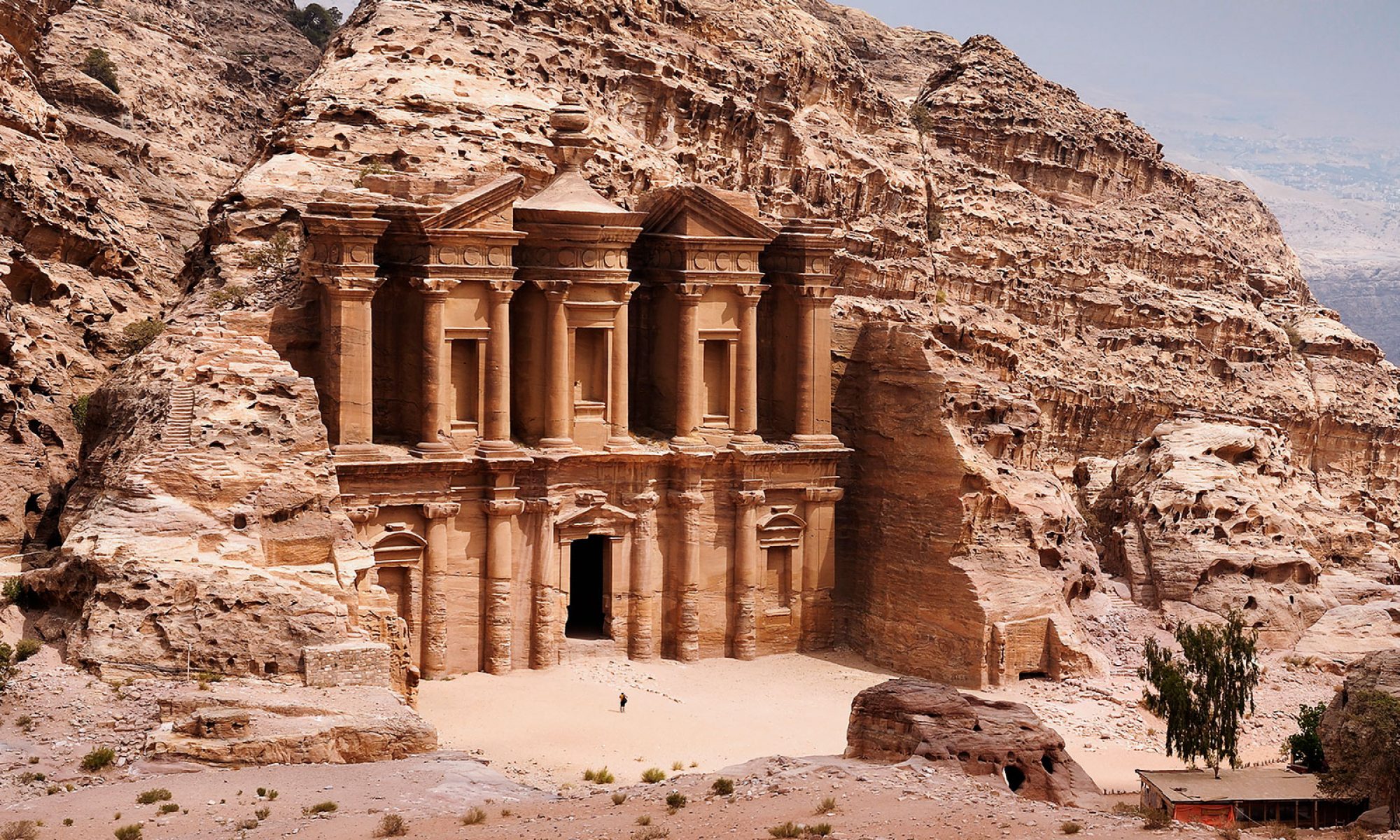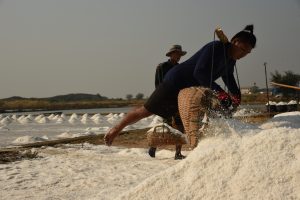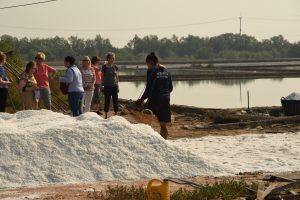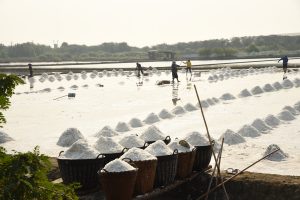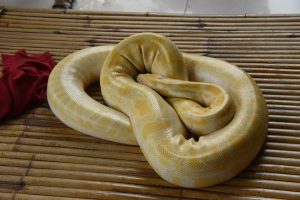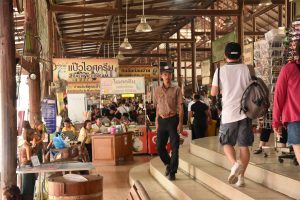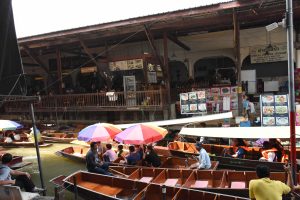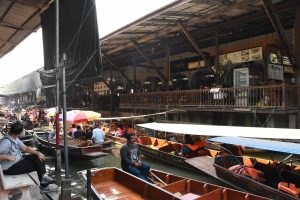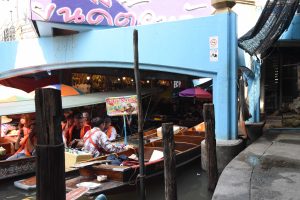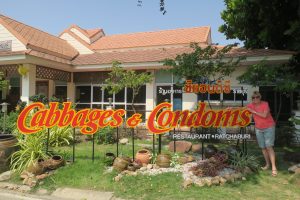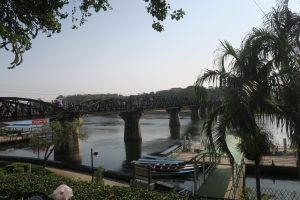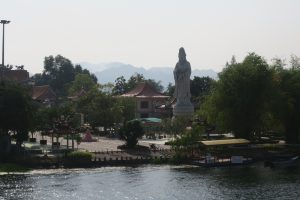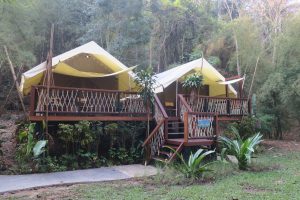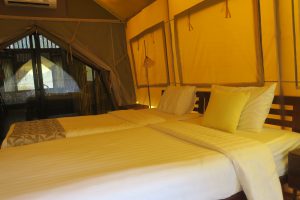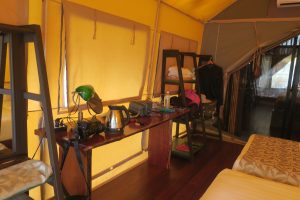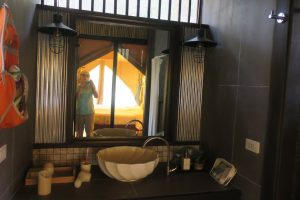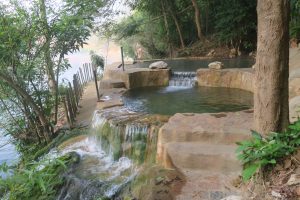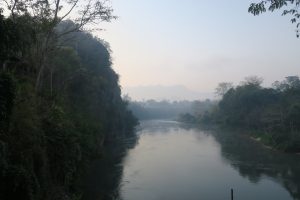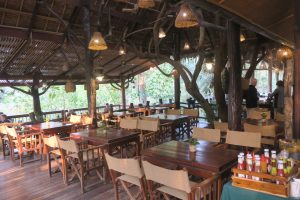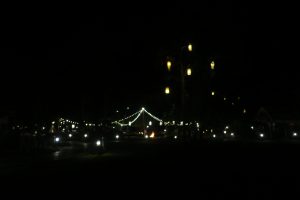I was feeling somewhat better this morning. We were leaving Bangkok and headed to Kanchanaburi Province which is where WWII POWs were forced to build a railway from Bangkok to Burma. It was a 4 1/2 hour drive so we stopped several times along the way to check out local sites.
During the ride Lin told us a little about the language. It was based on Sanskrit. It has 44 consonants and 24 vowels. It is a tonal language and the meaning of the word changes when you change the ending.
Our first stop was at the salt flats where locals were harvesting salt. They flood the area and typically wait about 3 weeks for most of the water to evaporate. Then they harvest the salt. It looked like difficult work.
Next stop was a floating market. We took a long tail boat from the bus to the market which wasn’t actually floating. The market had mostly souvenirs and some food stalls. We didn’t see anything we wanted or need. One of our companions paid to have hold a giant snake and have his picture taken. Here are pictures of the market.
We drove a little further to our lunch restaurant which was called Cabbage and Condoms in a town called Ratchaburi. All of the restaurant’s profits support the The Population & Community Development Association (PDA) and its programs in primary health, education, HIV/AIDS, rural development, environment and water etc.
Our next stop was Kanchanaburi’s war cemetery. It was in this area that Allied POWs and Asian conscripts were forced to build the infamous World War II railway. In 1942 the Allies were rapidly capturing the Japan’s sea routes to Burma, forcing the Japanese to develop an overland supply route from the east to support their troops. The Japanese decided that the most viable option was a railway that followed the River Kwai through the dense jungle on either side. About 200,000 Asian laborers and 61,000 Allied prisoners of war built this 260-mile stretch of rail in abominable conditions-for every half-mile of track laid 38 POWs perished. Many of the prisoners graves were moved to this cemetery which is currently maintained by Australian funds.
After spending a few minutes looking around we went to the bridge over the River Kwai which was originally made of wood but later replaced by a steel iteration. The train traversed the bridge while we were there. Afterwards we walked over the bridge and took pictures, remembering all those who gave their lives during its construction.
Back on the bus we headed to our tent camp which would be our home for the next two nights. It was beautiful. Here are pictures.
We had a buffet that night. The camp had lights in the trees and up high along the paths.
The pictures don’t do it justice.
